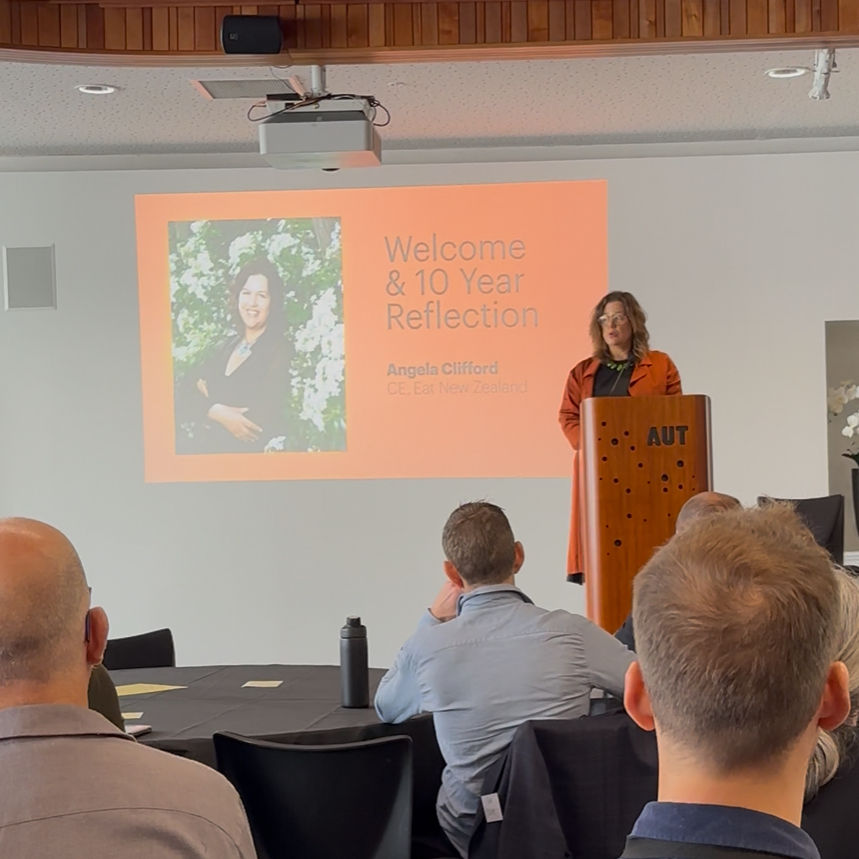Aotearoa gets a food waste definition
- Michal Garvey
- Nov 1, 2023
- 3 min read

The Ministry for the Environment has today released a definition of food loss and waste for Aotearoa. This is a long-awaited definition for those of us already working to reduce food waste, but why does this matter?
In a general sense, we all understand that if we’re putting food in the bin, it’s going to waste. However, food loss and waste is much more complex than that. It’s widely accepted that we waste one-third of the food that’s produced for human consumption and Project Drawdown identifies reducing food waste as the number one action we can take to fight the climate crisis. Over the past four years, I’ve been involved in many conversations about our food systems and how we should approach food waste, including the Independent Aotearoa Food Systems Dialogue, the Food Waste Hui, the Mana Kai Initiative and Eat New Zealand Kaitaki. One of the key themes that came out of all of them, was the limited access we have to food waste data in Aotearoa. While a definition doesn’t give us the data, one of the challenges highlighted has been that it’s difficult to measure something when we don’t know what it is we’re measuring. Therefore, this definition is a pivotal starting point for Aotearoa.
Sustainable Development Goal 12.3, asks that we halve our food waste by 2023, and now that we have this definition we as a nation can get on with collecting the data to measure our progress. This is also an important time to highlight that the SDG’s were set out in 2016, so we are halfway through their 2030 targets. A Global Stocktake on progress towards them is due to be released at COP28 in December.
Of course, at Foodprint and many other organisations that work in food waste reduction, we have been measuring our impact without this definition, but welcome its release to help ensure we’re all on the same page and allow for proper measurement to begin.
The Ministry has given one overarching definition of food loss and waste which is:
Imported or domestically produced food and drink, including inedible parts, which leave the food supply chain from the point that crops and livestock are ready for harvest or slaughter onwards to the point of consumption, to be recycled, recovered or disposed of in Aotearoa New Zealand.
Followed by individual definitions of food loss:
Imported or domestically produced food and drink, including inedible parts, which leave the food supply chain from the point that crops and livestock are ready for harvest or slaughter through to the processing and manufacturing stage (including transportation and storage) to be recycled, recovered or disposed of in Aotearoa New Zealand.
And of food waste:
Imported or domestically produced food and drink, including inedible parts, which leave the food supply chain from the wholesale, retail and marketing sectors onwards to the point of consumption, to be recycled, recovered or disposed of in Aotearoa New Zealand.
I’m really pleased to see that “sale of surplus food for consumption” sits alongside “donation, rescuing, gleaning” in the food redistribution section at the top of the waste hierarchy. Below these are upcycling and animal feed.
There is an acknowledgement that at the recycle and recovery stages, composting and other recovery options play an important role in returning nutrients to the soil, which it does, but it’s also great to see this being highlighted as a waste stream, which it is. I’ve long said that food that’s still fit for human consumption only belongs in one place and that’s providing nutrients to humans. Composting is great, but should only be used for the parts of food that are not edible such as eggshells, meat bones, banana peels and avocado stones.
The definition starts with food that’s ready to harvest, meaning food that is still in the ground or on the tree and ready to be picked. Starting here is in line with international best practices and in my opinion, will be a space to watch as we see an increase in climate change-related weather events taking out crops before they’re harvest ready, but still essentially contributing to food loss.
It’s important to note that inedible food is included in this definition. The definition states that this is in line with international best practices and helps deal with the complexities of inedible food across cultures.
All in all, it’s a great all-encompassing definition and provides a much-needed starting point for both measuring and reducing food loss and waste in Aotearoa.
For more information on this, please see the full definition document here.
I want to extend a huge thanks to three people in particular who I know personally and who have been leading this work at Ministry for the Environment, Jenny Marshall, Tane Leong and Katie Bright. As well as Kaitlin Dawson, Tessa Vincent, Miranda Mirosa and the New Zealand Food Waste Champions 12.3 for their consultation work on this over the last four years.



Comments